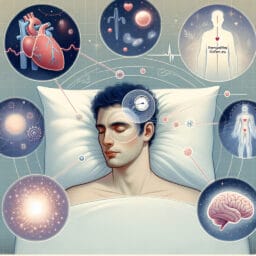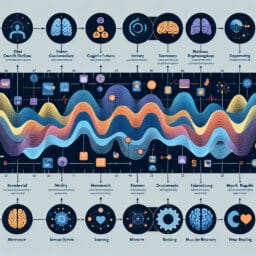Understanding the Basics: How to Define Your Sleep Pattern
Table of Contents
Understanding the Basics: How to Define Your Sleep Pattern
Did you know that the quality of your sleep is just as important as the quantity? Understanding your sleep patterns can significantly improve your overall health and well-being. Just like a unique fingerprint, each person has their own sleep profile composed of different stages and cycles that play vital roles in various physiological functions.
Sleep science reveals that our body goes through several sleep stages while we are asleep: REM (rapid eye movement) stage and three NREM (non-rapid eye movement) stages. Each stage involves distinctive brain waves and muscle activity. The lightest stage, known as N1 in the NREM stages, involves slowing heart rate and muscle relaxation. It is here that falling asleep transpires. The second NREM stage, referred to as N2, accounts for 40-60% of a sleep period where memory consolidation predominantly happens; this highlights why quality sleep is so crucial for cognitive functions such as learning and memory.
The third stage in the non-REM cycle – slow-wave or deep sleep – allows us to wake up feeling refreshed due to its restorative nature for both body and mind. On the other side lies REM sleep which usually occurs 90 minutes after you fall asleep – often associated with vivid dreaming due to intense brain activity similar to waking hours.
But what regulates these intricate processes? Our internal biological clock or circadian rhythm plays a pivotal role here by controlling our physical, mental, and behavioral changes over approximately 24 hours—including patterns of sleeping or eating along with hormone production such as melatonin responsible for inducing slumber.
Interestingly enough though different individuals follow different types of sleeping patterns broadly categorized into monophasic (one long nocturnal period), biphasic (two periods – one long at night with an afternoon nap), or polyphasic (multiple naps throughout day & night) schedules depending on factors like age, lifestyle habits including alcohol consumption which could disrupt regularity causing insufficient sleep resulting into disorders like sleep apnea.
But how do you define your sleep pattern? You may start by keeping a sleep diary or leveraging modern technology like wearable devices to track your sleeping hours. Sleep studies conducted by specialist can also offer an in-depth understanding of your sleep quality and potential issues such as obstructive sleep apnea.
Recognizing and adhering to a regular sleep pattern offers numerous benefits – from improved mental health, enhanced physical health, to increased productivity. It’s fascinating how paying attention to something we spend approximately one-third of our lives doing can lead us towards progressive lifestyle changes.
In the realm of everyday hustle, often we treat rest as an afterthought; however, let’s remember that cultivating healthy sleeping habits is just as important for our overall well-being. Sleep isn’t merely ‘shutting off’, but a complex process where countless vital works are performed seamlessly for functioning our best when awake. As the adage goes – “Sleep is the golden chain that ties health and our bodies together.” So make sure it’s strong enough.
| Stages of Sleep | Description |
|---|---|
| N1 (NREM) | The lightest stage where slowing heart rate and muscle relaxation occur. The process of falling asleep begins here. |
| N2 (NREM) | Accounts for 40-60% of a sleep period. Memory consolidation predominantly happens during this stage, highlighting the importance of quality sleep for learning and memory. |
| Slow-wave or Deep Sleep (NREM) | The third NREM stage that allows us to wake up feeling refreshed due to its restorative nature for both body and mind. |
| REM Sleep | Occurs 90 minutes after falling asleep, often associated with vivid dreaming due to intense brain activity similar to waking hours. |
| Understanding Sleep Patterns | Description |
| Monophasic | One long nocturnal sleep period. |
| Biphasic | Two sleep periods – one long at night with an afternoon nap. |
| Polyphasic | Multiple naps throughout day & night. |
| Defining Your Sleep Pattern | Method |
| Sleep Diary | Keep a diary to track your sleeping hours. |
| Wearable Devices | Use modern technology, such as wearable devices, to track your sleep. |
| Sleep Studies | Consult with a specialist for an in-depth understanding of your sleep quality and potential issues. |


